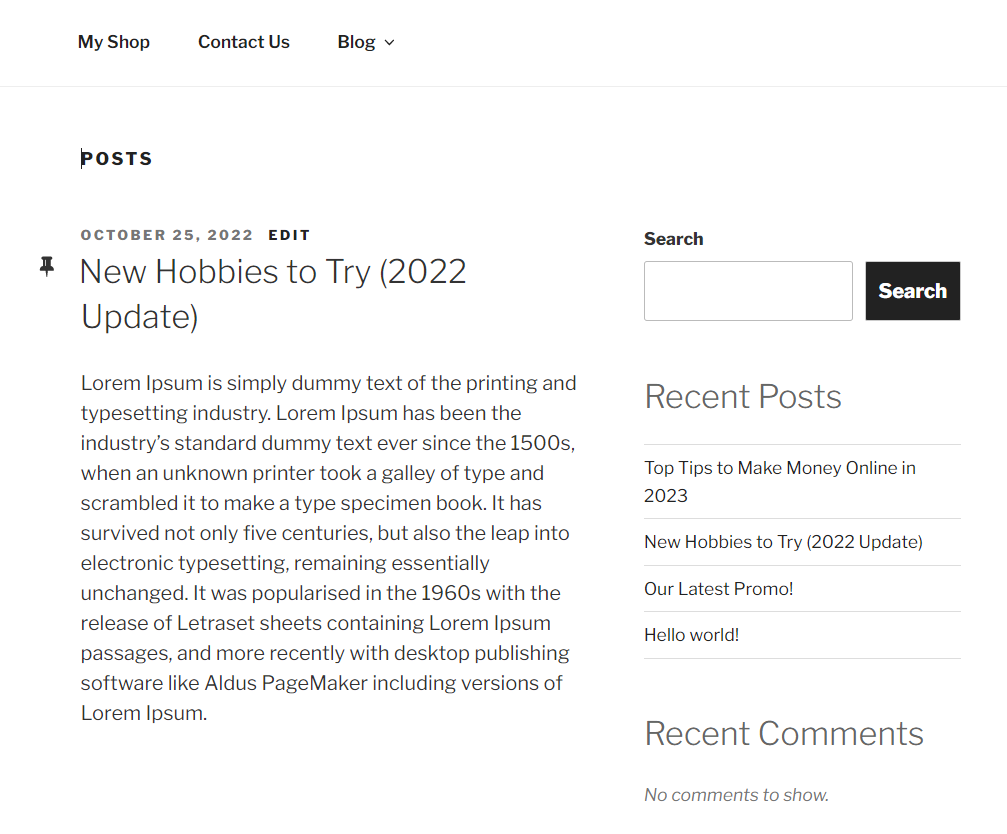What Is a Sticky Post in WordPress and How to Make One

When running a WordPress blog, the content management system (CMS) sorts posts in reverse chronological order, displaying the last post published at the top of the front page.
While there’s nothing wrong with that, sometimes you might want to highlight one particular post on your home page. Unless you make an older post sticky, any new content you publish will push it down the archives.
You can easily fix this issue using the WordPress sticky post feature. Keep reading as we explain how to make sticky posts on your WordPress website manually and by using a plugin. We will also include use cases where WordPress sticky posts come in handy.
What Is a Sticky Post in WordPress?
A sticky post is a feature in WordPress that allows you to “stick” a particular post to the top of your blog’s front page. Sticky posts are a great way to highlight important or popular content, as they remain at the top of your homepage even as new posts are published. You can easily create or remove a sticky post in WordPress by using the post editor or quick edit feature.
How to Make Sticky Posts in WordPress
The WordPress sticky post function comes with the block editor by default. To add a featured post to your home or blog page, simply enable the function when writing or editing it.
Here’s how to make a post sticky from the post edit screen:
- Log in to your WordPress dashboard and navigate to Posts → All Posts.
- Select the Add New button at the top of the post archive page to add a new WordPress post.
- On the right sidebar of the block editor, check the Stick to the top of the blog box within the Summary section. Older WordPress versions display this checkbox under the Status and visibility option.
- Click Publish after adding the header, content, and necessary blocks.

- Visit your website to make sure the post is pinned at the top of the home page.
To pin an existing post, select the Quick Edit option on the post archive page. Check the Make this post sticky box and click on the Update button.
Alternatively, click Edit and check the Stick to the top of the blog box inside the post editor ‒ the same step as turning a new post into a sticky post.
To streamline the process, we recommend installing a sticky post plugin. It’s particularly helpful if you manage a large volume of regular posts and need to swap sticky posts frequently.
Sticky Posts, for example, is one of the best WordPress plugins to help add a new column to the post archive page. It allows you to create sticky posts without editing them individually. Simply click on the star icon next to your chosen posts to turn them into featured posts.
Pro Tip
When choosing a plugin to install, make sure it is frequently updated by the developer team and compatible with the latest WordPress version. Having a high rating is another sign that a plugin functions properly.
When to Use a Sticky Post
WordPress CMS displays the most recent post first by default to help users attract readers with fresh content. However, there are cases where sticking an old post to the front page is more beneficial for the WordPress site.
For instance, pinning a published post that becomes relevant again due to a recent event helps drive traffic to your website. First-time readers will be more inclined to click on a post if it’s easily accessible, boosting your SEO strategy.

Making older posts sticky also gives you more time to produce more content. By swapping sticky posts periodically, you’ll keep the blog fresh while giving you more time to create quality posts.
Additionally, the sticky option lets you highlight the most important article on your site. The post may contain a critical announcement, a limited-time offer, or a giveaway. Putting it at the top of your front page will help attract visitors’ attention and ensure the information comes across.
Lastly, the WordPress sticky post feature makes it easy to introduce pillar articles to new visitors. These articles cover clusters of in-depth topics, which is excellent for building internal links. Driving traffic to pillar articles will help individual posts rank higher in search engines.
Pro Tip
Make your sticky post looks more appealing by adding a featured image. Also known as a post thumbnail, it’s visible on category archive pages and widget areas.
Conclusion
WordPress sticky post is a handy built-in feature that allows users to feature a specific blog post from any time frame. From giving visitors important information to driving more organic traffic, the benefits of having a sticky post in WordPress vary.
We hope this article helped you understand how the sticky post feature works and the different ways to use it for your website’s growth. Should you have any more questions, don’t hesitate to leave a comment below. Good luck!





